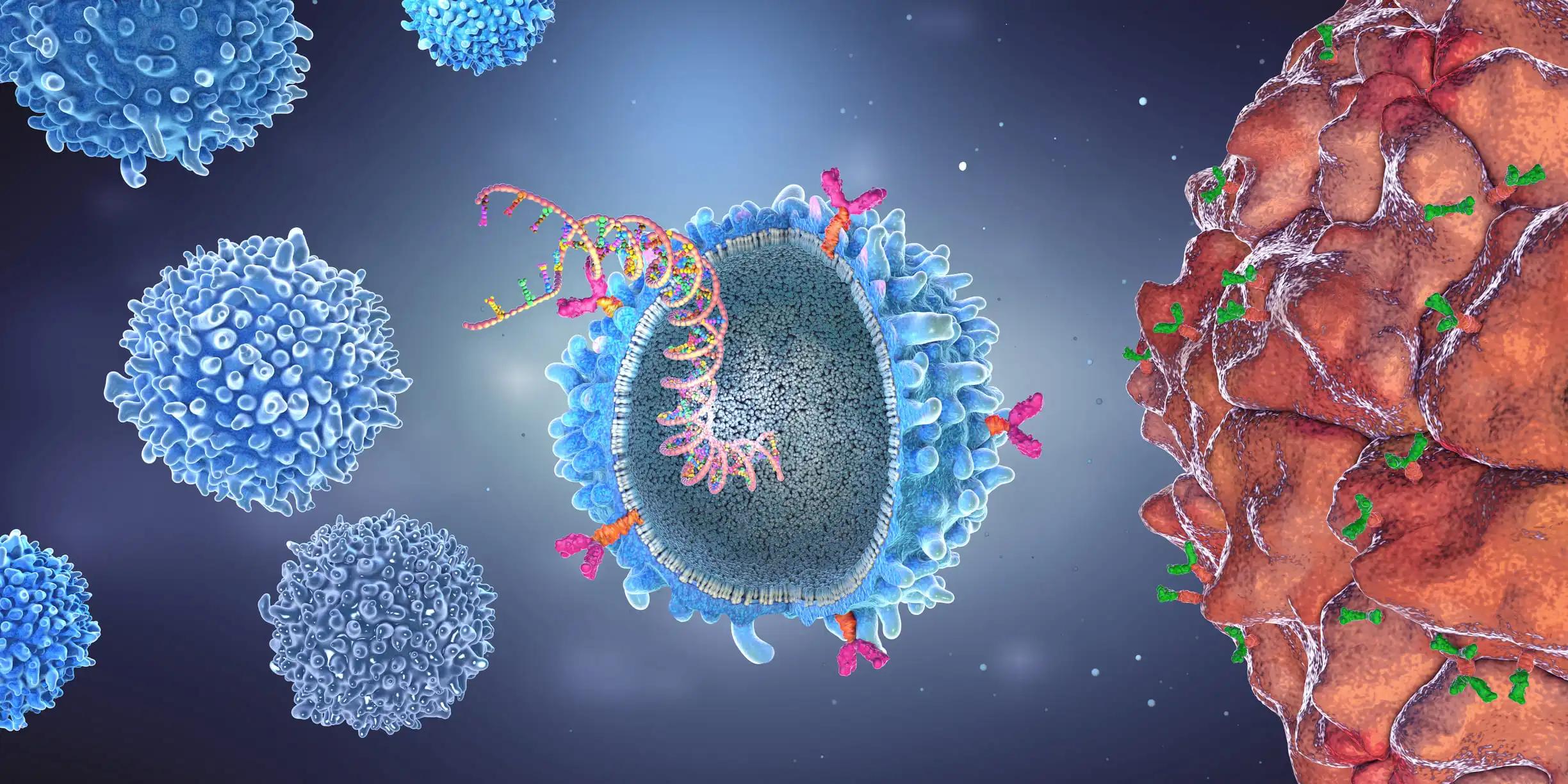KEY TAKEAWAYS
- The ongoing Phase I GO39775 trial (NCT03275103) aimed to evaluate whether a single pre-treatment dose of the IL-6 receptor-blocking monoclonal antibody TCZ can reduce the incidence of CRS.
- The incidence of CRS was significantly lower in the TCZ pre-treatment group (38.7%) compared to the non-TCZ group (90.9%).
- Pretreatment with TCZ effectively reduced the incidence of CRS in RRMM patients receiving cevostamab without compromising its anti-myeloma activity.
Interleukin (IL)-6 receptor blockade with the monoclonal antibody tocilizumab (TCZ) is an established treatment for cytokine release syndrome (CRS) caused by chimeric antigen receptor (CAR) T-cells and bispecific antibodies. Pretreatment with TCZ could prevent or mitigate CRS’s onset and severity. In this study, researchers aimed to determine whether a single dose of TCZ administered before initiating cevostamab, an FcRH5xCD3 bispecific antibody, reduces the incidence of CRS in RRMM patients.
In the ongoing GO39775 Phase I study (NCT03275103) of cevostamab, a dedicated TCZ pre-treatment arm was included. Enrolled patients (pts) had RRMM for which no established therapy was available, suitable, or tolerable. A single 8mg/kg intravenous (IV) dose of TCZ was administered 2 hours before the initiation of IV cevostamab at the 3.6mg step-dose level on Day 1 of Cycle 1; cevostamab was continued at the 90mg target dose level on C1D8 and D1 of each subsequent 21-day cycle. The 3.6/90 mg non-TCZ cohort data were used as a retrospective comparison. All patients received corticosteroids, antihistamines, and acetaminophen before receiving cevostamab. CRS was reported using ASTCT criteria. All pts supplied informed consent in writing.
At the enrollment deadline (22 August 2022), 75 participants had enrolled (TCZ group: 31; non-TCZ group: 44; median age: 63 years for both groups). The median number of prior therapies was four in the TCZ group and six in the non-TCZ group (two to eleven in both groups). Most patients were triple-class refractory (TCZ group: 80.6%; non-TCZ group: 86.4%), and numerous patients were penta-drug stubborn (TCZ group: 45.2%; non-TCZ group: 72.4%). In the TCZ group, the median follow-up was 8.5 months (range: 1.1–16.8); in the non-TCZ group, it was 12.8 months (range: 0.2–36.8). The incidence of CRS was considerably lower in the TCZ group than in the non-TCZ group (38.7% versus 90.9%, respectively; P<0.001;). Grade 3 CRS occurred in two instances (one in each cohort). No Grade 4–5 CRS was observed.
In C2+, the TCZ group had no CRS events, while the non-TCZ group had five. Except for neutropenia (TCZ: 71.0%; Gr 3–4: 67.7%; non-TCZ: 38.0%, all Gr 3–4), incidences of adverse events not associated with CRS were comparable. Notably, neutropenia was reversible, treatable with growth factor when indicated, and did not result in treatment termination. In the TCZ group, there was no impact on the anti-myeloma activity of cevostamab. The overall response rates for the TCZ and non-TCZ groups were 54.8% (95% CI: 35.7–74.0%) and 37.2% (95% CI: 21.6–52.0%), respectively. The rates of very excellent or better partial responses were 32.3% and 25.6%, respectively. At the cutoff, the median duration of response in the TCZ group was 11.3 months (range: 1–12), and in the non-TCZ group, it was 10.9 months (range: 1–34). Peak IL-6 levels after the 3.6mg step dose were substantially higher in the TCZ group (median: 2311pg/mL) than in the non-TCZ group (median: 245pg/mL), most likely as a result of TCZ-mediated inhibition of IL-6 clearance. The peak level of C-reactive protein, a downstream marker of inflammation, was substantially lower in the TCZ group (median: 4mg/L) than in the non-TCZ group (median: 123mg/L), indicating near complete suppression of the IL-6-mediated signaling pathway.
The study revealed that TCZ pre-treatment reduces the incidence of CRS in patients with RRMM who are receiving cevostamab. Importantly, TCZ pre-treatment has no harmful effect on cevostamab’s anti-myeloma activity.
Clinical Trial: https://clinicaltrials.gov/ct2/show/NCT03275103
Maria-Victoria Mateos, Nizar J Bahlis, Andrew Spencer, Rayan Kaedbey, Paula Rodríguez-Otero, Simon Harrison, Chihunt Wong, Grant Goodman, Rin Nakamura, Voleak Choeurng, James Cooper, Suzanne Trudel/TOCILIZUMAB PRE-TREATMENT SIGNIFICANTLY REDUCES THE INCIDENCE OF CYTOKINE RELEASE SYNDROME IN PATIENTS WITH RELAPSED/REFRACTORY MULTIPLE MYELOMA (RRMM) WHO RECEIVE CEVOSTAMAB/Inc, M. G. (n.d.). TOCILIZUMAB PRE-TREATMENT SIGNIFICANTLY REDUCES THE INCIDENCE OF… by Dr. María-Victoria Mateos. Library.ehaweb.org. Retrieved July 18, 2023, from https://library.ehaweb.org/eha/2023/eha2023-congress/386775/mara-victoria.mateos.tocilizumab.pre-treatment.significantly.reduces.the.html?f=menu%3D16%2Abrowseby%3D8%2Asortby%3D2%2Ace_id%3D2489%2Aot_id%3D27922%2Atrend%3D4016%2Amarker%3D4178



